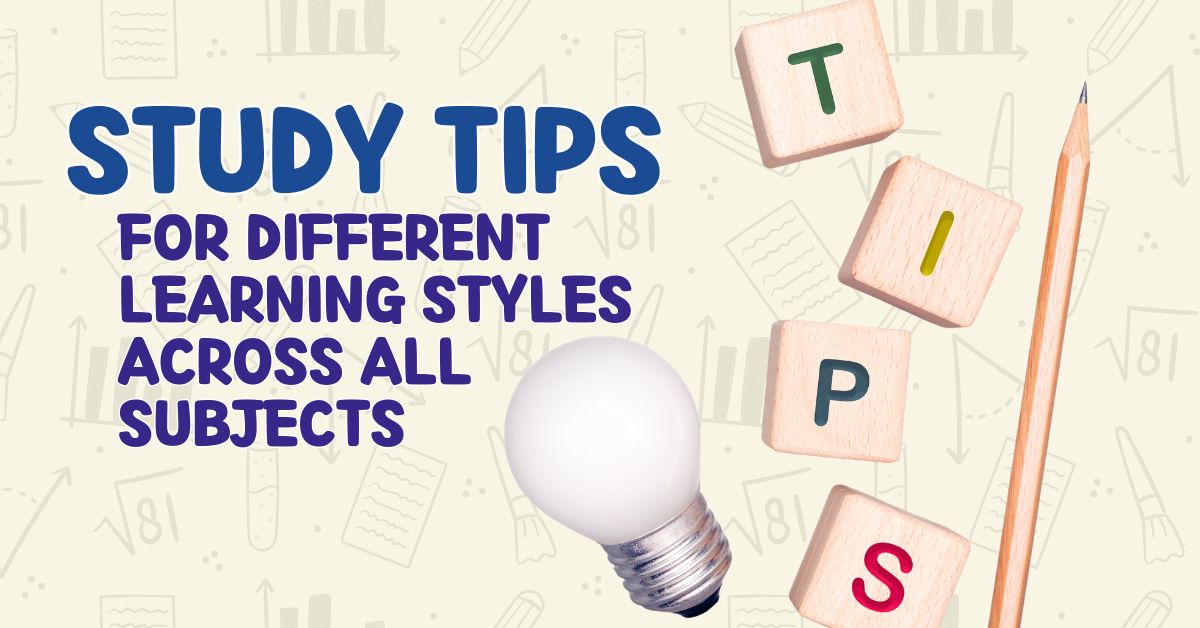In the world of homeschooling, understanding your child’s unique learning style is a game-changer. It’s not just about delivering information but doing so in a way that resonates with how they naturally process and retain knowledge. This blog post uncovers the secrets to enhancing education by aligning teaching methods with the three primary learning styles—visual, auditory, and kinesthetic. We will provide practical study tips for each type, ensuring your child excels across all subjects. Homeschooling parents will gain insights into customizing lessons and creating an enriching learning environment that nurtures their children’s strengths.
Identifying Learning Styles For Effective Homeschooling
Learning styles refer to the preferred way a person absorbs, processes, and retains information. The three primary styles are visual, auditory, and kinesthetic. Recognizing these can significantly impact a homeschooling parent’s approach, making lessons more effective and enjoyable. Visual learners thrive on images, diagrams, and written instructions. They understand concepts better when they can see them, making visuals a powerful tool in their learning arsenal.
Auditory learners, on the other hand, benefit from listening. They excel in environments where they can hear information, discuss ideas, and engage in verbal exchanges. Kinesthetic learners prefer a hands-on approach. They learn best through doing, moving, and touching—activities that involve direct interaction with materials.
By identifying your child’s homeschooling learning style, you can create a more tailored educational experience. This personalization can lead to higher engagement levels, better knowledge retention, and a deeper love for learning. Observing how your child reacts in different scenarios can offer clues to their preferred style, allowing you to adjust your methods accordingly.

Implementing learning style-based strategies benefits not only the child but also the educator. It fosters a supportive and adaptive environment where both parent and child feel confident in the homeschooling process. Ultimately, understanding learning styles serves as a foundation for a more effective and fulfilling educational experience.
Crafting Study Tips For Visual, Auditory, And Kinesthetic Learners
Study Tips for Visual Learners:
Visual learners absorb information best through sight. They appreciate order and clarity in their learning materials, often finding visual aids instrumental in grasping complex concepts. In homeschooling, visual learners can benefit greatly from strategies that incorporate strong visual elements. For subjects like history, maps and timelines can be particularly effective. These learners can visualize events spatially and chronologically, which helps them see the bigger picture. Creating colorful mind maps and charts to summarize key points encourages them to organize information methodically. Using color-coded notes, highlighters, and flashcards also enhances their learning by making it easier for them to categorize and recall information.
Incorporating technology can further enhance a visual learner’s experience. Educational videos and interactive software offer dynamic ways to engage with the material, providing a rich tapestry of visual stimuli. These resources can make abstract concepts more tangible, particularly in subjects like science or mathematics, where visual demonstrations can clarify complex ideas. Creating a visually appealing study space can also support a visual learner’s focus. A tidy, well-organized area with minimal distractions allows them to concentrate better on their tasks. Incorporating a whiteboard or bulletin board where they can display important information or artwork can also inspire creativity and reinforce learning.
Study Tips for Auditory Learners:
Auditory learners excel when they can hear and discuss information. These learners benefit from strategies that emphasize listening and speaking, making auditory engagement a crucial part of their homeschooling experience. One effective technique for auditory learners is reading aloud. Whether it’s a textbook or a story, hearing the words spoken helps them process and retain information. Audiobooks and recorded lectures provide additional opportunities to absorb content through listening. Engaging in group discussions, even if it’s just with family members, can help reinforce learning as they articulate their thoughts and hear others’ perspectives. Music and rhymes can also play a significant role in an auditory learner’s education. Incorporating songs or melodies related to the subject matter can aid memorization and understanding. For instance, using mnemonics set to music can help them remember formulas or facts more easily.
Encouraging auditory learners to teach back what they’ve learned can further solidify their understanding. This technique not only boosts their confidence but also reinforces their knowledge as they verbalize concepts in their own words. Recording themselves speaking or explaining subjects can also be a useful tool for review and reflection.
Study Tips for Kinesthetic Learners:
Kinesthetic learners learn best through movement and hands-on activities. They thrive in environments where they can physically interact with materials, making active engagement essential for their educational success. In homeschooling, incorporating interactive projects and experiments can captivate kinesthetic learners. For instance, in science subjects, conducting experiments or building models allows them to explore concepts in a tangible way. Field trips and outdoor activities provide real-world experiences that enhance their understanding and retention of information. Creating a dynamic learning environment is key for these learners. Allowing them to move around while studying, like using standing desks or taking short breaks to stretch or walk, can help maintain their focus and energy levels.
Incorporating physical objects, such as manipulatives or craft supplies, in lessons can also facilitate a more hands-on approach. Kinesthetic learners often benefit from role-playing or dramatizations. Acting out historical events or scientific processes can turn abstract ideas into memorable experiences. Encouraging them to use gestures or movements while explaining concepts can also help reinforce their learning.
Adapting Learning Styles To Various Subjects In Homeschooling
Applying these strategies across different homeschool subjects can enhance the educational experience for all types of learners. By integrating visual, auditory, and kinesthetic techniques, homeschooling parents can create a versatile and inclusive curriculum. In subjects like language arts, visual learners can benefit from graphic organizers to outline essays or stories, while auditory learners might prefer discussing plot developments or listening to literature. Kinesthetic learners could engage in writing through interactive activities, such as storytelling through playdough or acting out scenes. Mathematics offers unique opportunities to tailor learning styles. Visual learners can use diagrams and visual aids to understand geometric concepts, while auditory learners might benefit from verbal problem-solving discussions. Kinesthetic learners can use physical objects to represent numbers or engage in activities that involve measuring or constructing.
Science subjects can be enriched through experiments and hands-on projects. Visual learners can benefit from detailed diagrams and videos, auditory learners from recorded explanations or discussions, and kinesthetic learners from conducting experiments or building models. These methods ensure a comprehensive understanding of scientific principles. In social studies, visual learners can create visual timelines of historical events, auditory learners can listen to historical podcasts or engage in debates, and kinesthetic learners can reenact historical scenes or visit relevant sites. By adapting teaching methods to each learning style, homeschooling parents can equip their children with a well-rounded education.
Empowering Homeschooling Success Through Understanding Learning Styles
Understanding and applying different learning styles in homeschooling can significantly impact a child’s educational experience. By tailoring study tips to visual, auditory, and kinesthetic learners, parents can create a more engaging and effective learning environment. Recognizing and catering to individual preferences allows children to thrive academically and develop a lifelong love for learning. The key is observing your child’s natural inclinations and adapting lessons to suit their style. By doing so, you’ll foster a deeper connection to the material and create a positive, supportive atmosphere for their growth. Remember, there is no one-size-fits-all approach in education—embracing diversity in learning styles ensures that every child has the opportunity to shine.
We encourage you to explore these strategies and observe the transformation in your child’s learning experience. With dedication and creativity, homeschooling can become a rewarding and successful endeavor for both parent and child. If you’re eager to learn more or seek personalized guidance, consider reaching out to homeschooling communities and resources for additional support.


